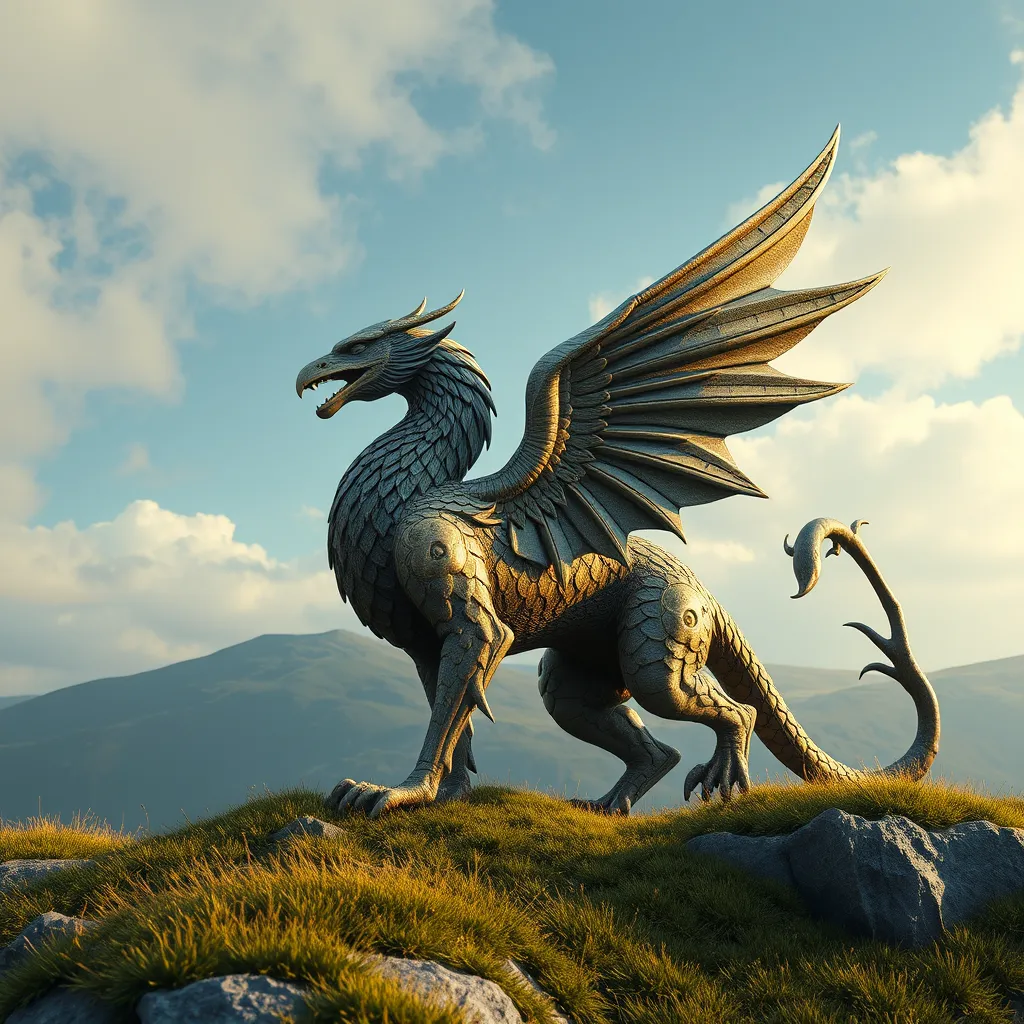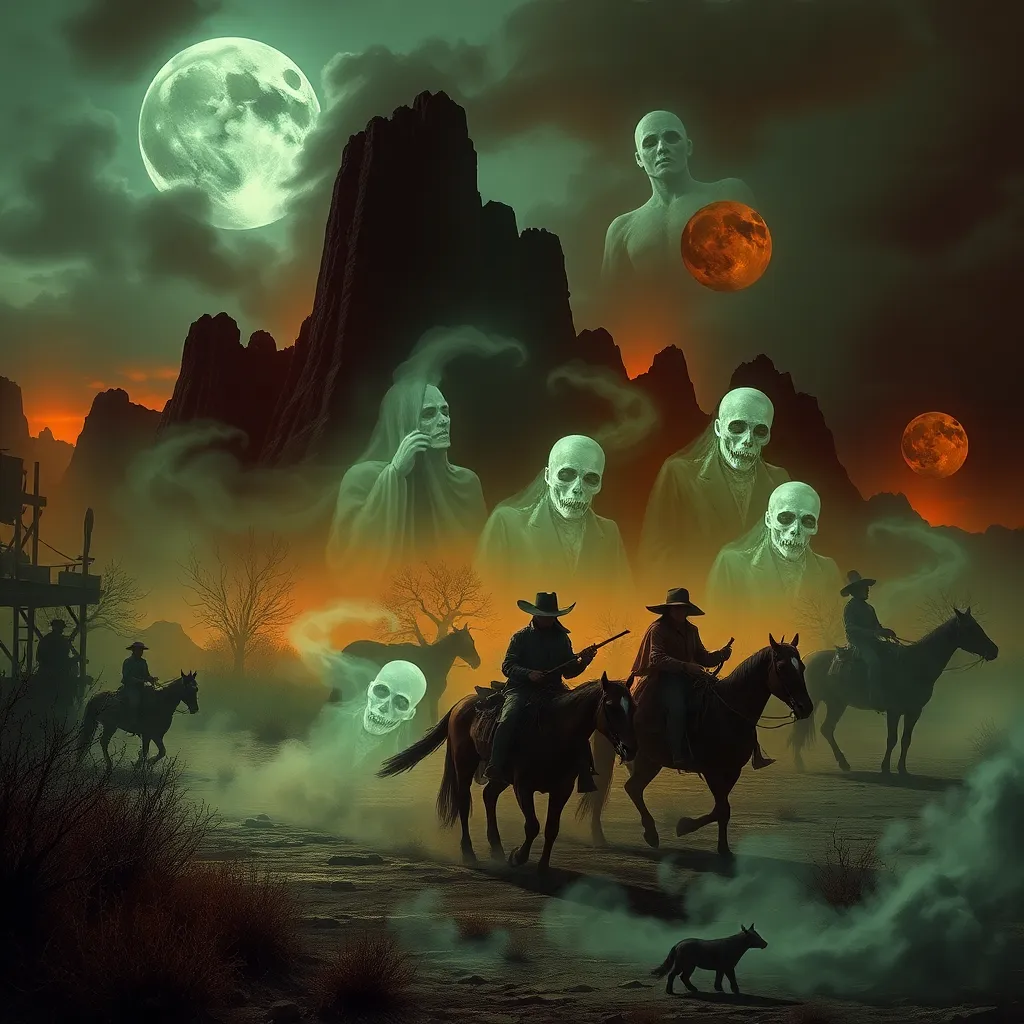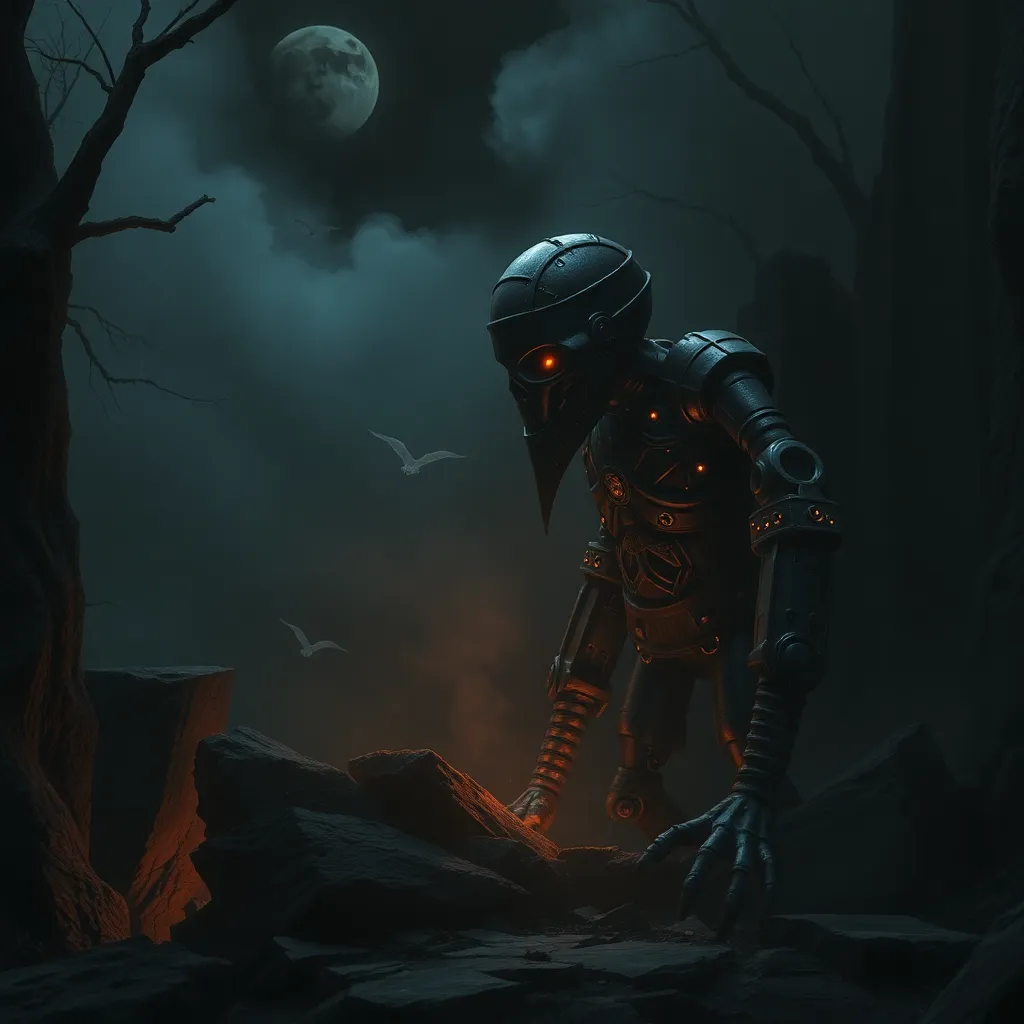The Griffin’s Symbolic Meaning in Celtic Mythology
I. Introduction
The Griffin is a fascinating creature that has captivated the imaginations of people across various cultures and mythologies. This mythical hybrid, with the body of a lion and the head and wings of an eagle, embodies a unique blend of characteristics that have made it a symbol of power, protection, and wisdom throughout history. In Celtic culture, symbolism plays a vital role, influencing art, literature, and spiritual beliefs. This article aims to explore the multifaceted symbolic meaning of the Griffin in Celtic mythology, examining its origins, characteristics, and significance in both historical and modern contexts.
II. The Griffin: A Mythical Hybrid
A. Description and characteristics of the Griffin
The Griffin is often depicted as a majestic creature, embodying the strength and nobility of both the lion and the eagle. Its lion-like body signifies strength and ferocity, while its eagle features symbolize keen vision and the ability to soar above earthly concerns. This duality makes the Griffin a powerful symbol in mythology, representing the union of land and sky, physical prowess and spiritual insight.
B. Origins of the Griffin in various mythologies
The Griffin has roots in various ancient cultures, including Egyptian, Persian, and Greek mythologies. In ancient Egypt, it was believed to be a guardian of the divine, often depicted in tombs and temples. The Greeks associated it with the sun god, Helios, and believed it could protect sacred treasures. However, its significance in Celtic mythology offers a unique interpretation that reflects the values and beliefs of the Celts.
C. The Griffin’s role in Celtic mythology
In Celtic mythology, the Griffin is not just a creature but a potent symbol of various virtues. It has been woven into the fabric of Celtic tales and legends, serving as a guardian and a representation of the qualities that the Celts esteemed, such as bravery, protection, and wisdom.
III. The Griffin as a Symbol of Strength and Courage
A. Representation of physical power
One of the most prominent symbolic meanings of the Griffin is its representation of strength and power. The lion’s body conveys a sense of dominance and physical prowess, making the Griffin an ideal symbol for warriors and leaders in Celtic culture.
B. Association with bravery in Celtic warriors
Celtic warriors often sought symbols that embodied their values and aspirations. The Griffin, with its fierce demeanor and noble stature, became synonymous with bravery and valor on the battlefield. It inspired warriors to embody the qualities of this mythical creature, urging them to fight with courage and honor.
C. Examples of griffin imagery in Celtic art and artifacts
- Griffins are frequently depicted in Celtic knotwork and stone carvings, showcasing their significance in ancient art.
- Artifacts, such as jewelry and weaponry, often feature griffin motifs, emphasizing their importance as symbols of strength and protection.
- The presence of griffins in illuminated manuscripts, like the Book of Kells, illustrates their revered status in Celtic culture.
IV. The Griffin and the Concept of Guardianship
A. Role as a protector of treasures and sacred spaces
The Griffin is often viewed as a guardian of treasures, both material and spiritual. In Celtic mythology, it is believed that griffins protect sacred spaces, such as temples and burial grounds, safeguarding the sanctity of these areas from harm.
B. Connections to Celtic deities and their guardianship
Various Celtic deities are associated with the Griffin, often embodying the attributes of guardianship and protection. For example, the goddess Brigid, known for her nurturing qualities, is sometimes linked to griffins, symbolizing the protective nature of motherhood and fertility.
C. Historical accounts of Griffin-like creatures as protectors
Throughout history, accounts of Griffin-like creatures serving as protectors can be found in Celtic folklore. These beings were believed to ward off evil spirits and protect sacred sites, reinforcing the Griffin’s role as a guardian in both myth and reality.
V. The Griffin’s Association with Wisdom and Knowledge
A. The duality of the eagle and lion in the Griffin’s symbolism
The Griffin’s unique composition of an eagle and a lion also symbolizes the duality of wisdom and power. The eagle represents the intellect and the ability to see beyond the ordinary, while the lion embodies strength and authority. Together, they form a creature that signifies the importance of balance between physical and mental prowess.
B. Connections to wisdom in Celtic lore
In Celtic lore, wisdom was highly valued, and the Griffin was often seen as a symbol of enlightenment. The ability to transcend earthly concerns and seek higher knowledge was a noble pursuit, and the Griffin represented this aspiration.
C. The Griffin as a symbol of enlightenment
The Griffin’s association with enlightenment is further reflected in its depiction as a guide for those on a quest for knowledge. In various tales, griffins are portrayed as wise beings that provide counsel and guidance, helping heroes navigate the challenges they face.
VI. The Griffin in Celtic Literature and Folklore
A. References to Griffins in Celtic tales and legends
Griffins appear in numerous Celtic tales and legends, often serving as formidable opponents or wise allies. Their presence in these stories emphasizes their symbolic meanings and the values they embody.
B. Analysis of the Griffin’s portrayal in literature
Literature from the Celtic tradition frequently highlights the dual aspects of the Griffin—its role as a fierce protector and its wisdom. These portrayals reflect the complexities of human nature and the struggles between strength and intellect.
C. The impact of these stories on Celtic cultural identity
The stories of griffins and their symbolic meanings have played a significant role in shaping Celtic cultural identity. They serve as reminders of the qualities that the Celts aspired to uphold, influencing their art, folklore, and social values.
VII. Modern Interpretations and Cultural Revivals
A. The Griffin’s influence in contemporary art and literature
In modern times, the Griffin continues to inspire artists and writers, appearing in various forms of contemporary art and literature. Its rich symbolism resonates with those exploring themes of strength, protection, and wisdom.
B. Revival of interest in Celtic mythology
The resurgence of interest in Celtic mythology has brought the Griffin back into the spotlight. Many people are drawn to the deep meanings and rich narratives associated with Celtic symbols, including the Griffin.
C. The Griffin as a symbol in modern Celtic festivals
Today, the Griffin serves as a prominent symbol in many Celtic festivals, representing the celebration of heritage and cultural identity. Its image can be seen in decorations, performances, and storytelling, connecting contemporary audiences with their ancestral roots.
VIII. Conclusion
In summary, the Griffin holds a multifaceted symbolic meaning in Celtic mythology, representing strength, courage, guardianship, wisdom, and enlightenment. Its enduring legacy reflects the values and beliefs of the Celtic people, influencing art, literature, and cultural identity throughout history. As we continue to explore the depths of Celtic mythology and symbolism, the Griffin remains a powerful emblem of the connection between the physical and spiritual realms, inviting us to delve deeper into the rich tapestry of our shared cultural heritage.



